Rainy weather is less than ideal for a camping trip, but you can’t let a little bit of rain dampen your spirits or enjoyment of the great outdoors.
In Scotland, we say there’s no such thing as bad weather, just the wrong clothes. The same can be said for camping. The correct equipment and preparation can really help with any rainy situation.
Here are some tips for camping in the rain.
Bring the Perfect Rainy Day Shelter
Before you head off on a camping trip, always check the weather forecast. If there are thunderstorms or extreme weather on the horizon it might be worth changing your plans.
If you do decide to go camping and there is an inclement weather forecast, it goes without saying that a good quality waterproof tent will be the most important piece of camping gear. Whether you’re tent camping, backpacking, trekking, or car camping, investing in your shelter will always be worthwhile.
A tent with a rain fly, footprint, and sealed seams will help to protect you and your fellow campers from the rain. A bathtub-style tent floor can also prevent water seepage. A tent with a vestibule or additional storage area will be very handy for storing wet items that you do not want to bring inside the tent.
Even in wet weather, you will need proper ventilation inside your tent to prevent condensation buildup. Keep windows partially open and use vents if available.
Here are the best camping tents for your outdoor home away from home.
Find the Best Spot for Your Tent
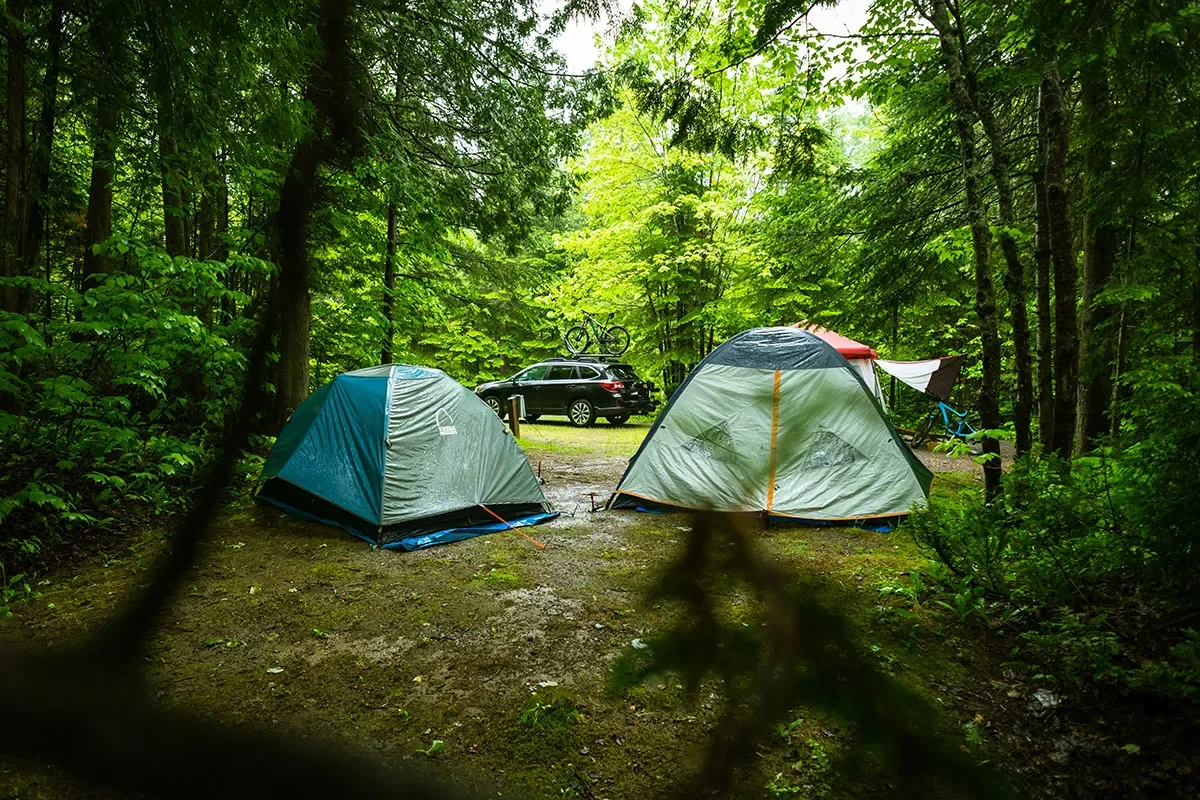
Image by Tim Foster
In general, it is best to avoid low-lying areas or spots prone to flooding when you are looking for a good spot for your tent. Ideally, look for elevated ground where water will not pool around your tent. Always double-check that the rainfly is securely attached and covers the entire tent.
If you are planning to stay at a campsite and you have the luxury of choice, go for one with shower facilities if you know it is going to be rainy. A warm shower after a long, soggy day will be very welcome.
Pack the Right Clothing
The main goal with your clothing is to avoid having wet clothes. Wearing soggy clothes is miserable, and you will feel cold quickly.
You should wear a moisture-wicking base layer, followed by insulating mid-layers, and a waterproof outer layer or rain jacket to stay warm and dry.
Pack quick-drying rain gear made from synthetic materials or merino wool, instead of cotton. These breathable fabrics wick away moisture and keep you warm even when wet. While down insulation is very warm, it’s not ideal for wet weather, so try to stick to synthetic materials.
It is wise to invest in a good pair of waterproof hiking boots or hiking shoes, a hiking jacket, and gloves so you can avoid having wet feet whenever you head out for hikes or adventures. Bring some spare dry clothes in case you end up getting wet.
Jackets and hiking shoes made with Gore-Tex membranes are also very efficient at waterproofing. Also, clothing that is treated with a DWR (durable water repellent) coating can help to keep the rain off.
Learn more about how to layer clothing for winter.
Store Items in Dry Bags
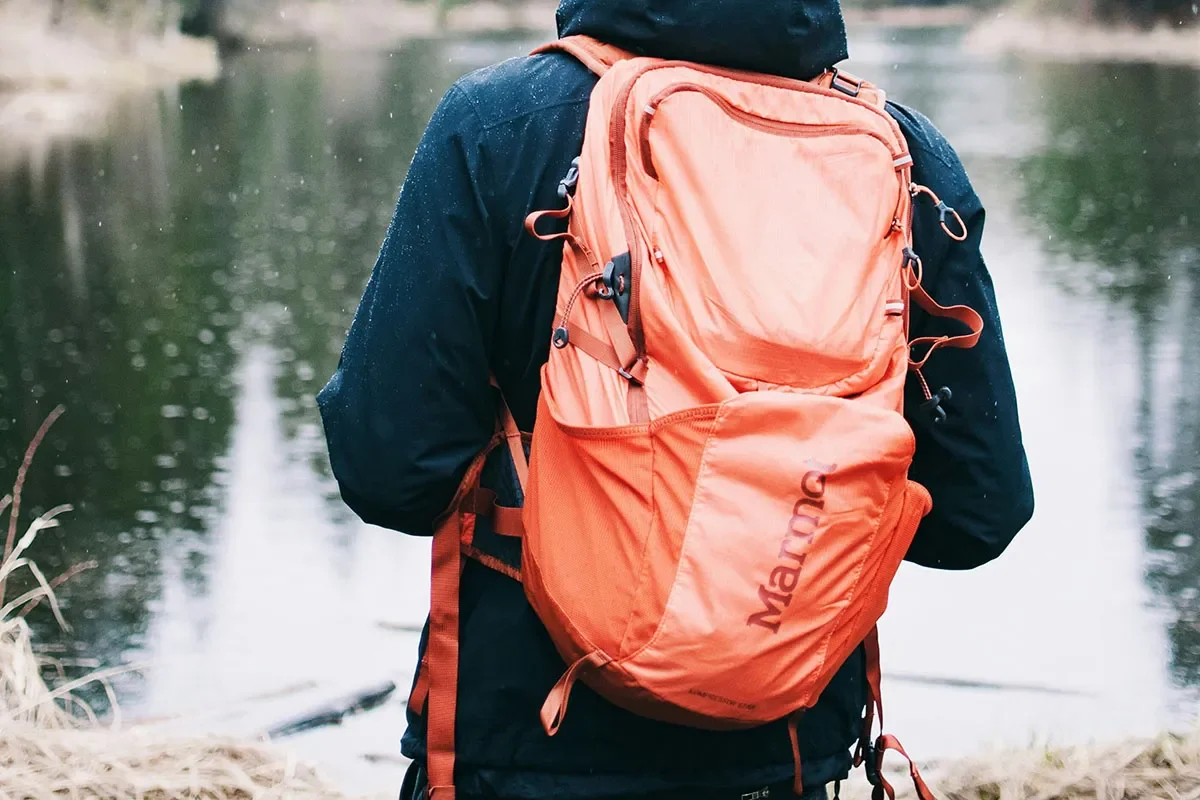
Image by Ezra Jeffrey-Comeau
Dry bags or waterproof containers are great for storing clothes, electronics, and other essentials to protect them from moisture while you are on a cold-weather camping trip.
If you’re hiking or kayaking to your campsite, a dry place to store these important items is beyond useful.
Cook Warming Campfire Meals
While you are camping in the wilderness, you will need to prepare some hot meals and beverages. It’s important to fuel your body properly, drink plenty of water, and eat more calories than normal to keep your energy up while you’re braving wet conditions.
Pack a water container and come prepared with nutritious meals and some comforting beverages, such as tea or soup, to help you stay warm.
It’s not safe to cook inside your tent, so you will need to find a sheltered spot to use your camping stove. If there are bears in the area, you should cook somewhere far away from where you are sleeping.
Here are some simple hacks for cooking campfire meals.
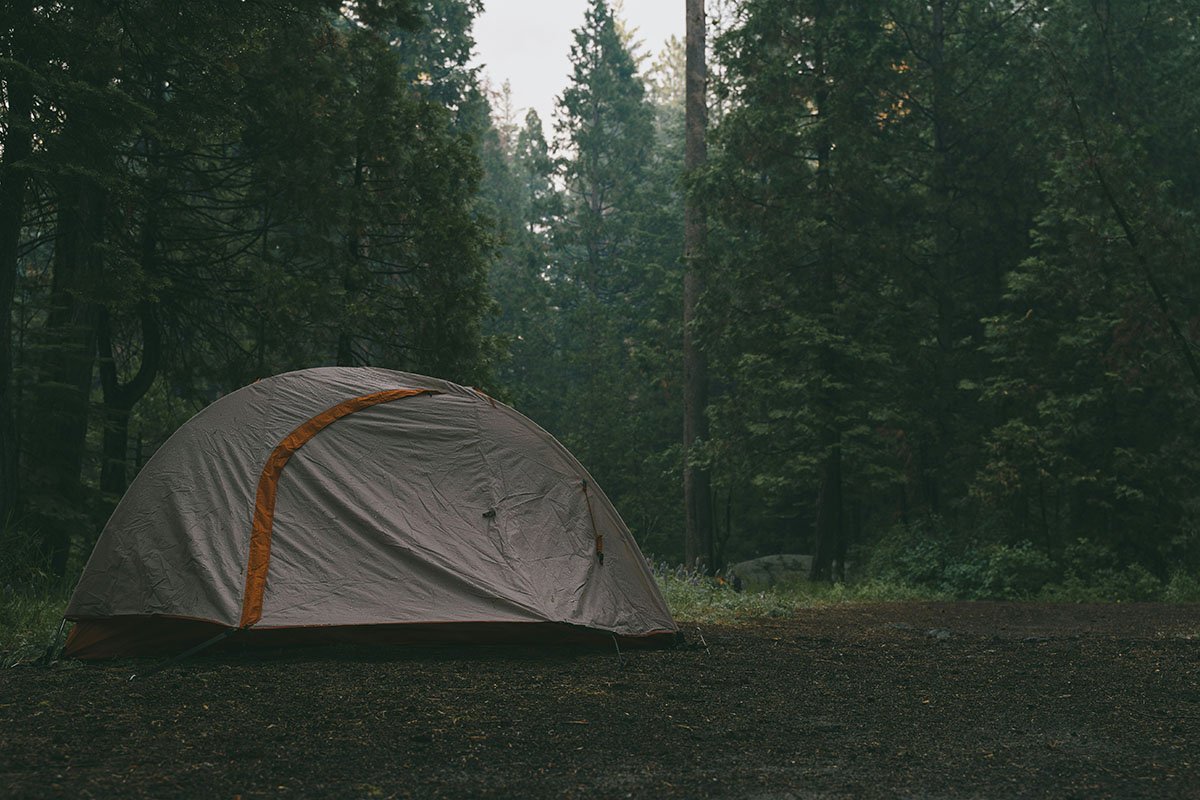
Image by Y S
If possible, set up a tarp or canopy over your cooking area so you can eat and cook without getting soaked.
You can also place a tarp or old rug outside your tent entrance to create a mud-free zone where you can remove wet gear and muddy shoes before entering. Extra tarps can be very useful for rainy weather camping.
Keep Everything as Dry as Possible
Getting drenched is no fun. Keep everything inside your tent away from the sides, including your sleeping bag, sleeping pad, and liner. You may end up spending more time than you anticipated inside the tent, so make sure there is enough space for everything and everyone.
Pack extra dry clothes, blankets, and towels and keep them somewhere dry. Items that must stay dry should be packed first, at the bottom of the backpack, so they will stay dry if you have to open your pack in the rain several times.
Before you head home, make sure everything is dry before you pack it away. Air out your equipment before rolling and stuffing it away, to avoid mold from forming.
Another way to keep your things dry is to pack waterproof matches, a lighter, or a fire starter kit in a waterproof container. Building a fire can provide warmth and lift your spirits during rainy weather.
Bring a Repair Kit and a First Aid Kit
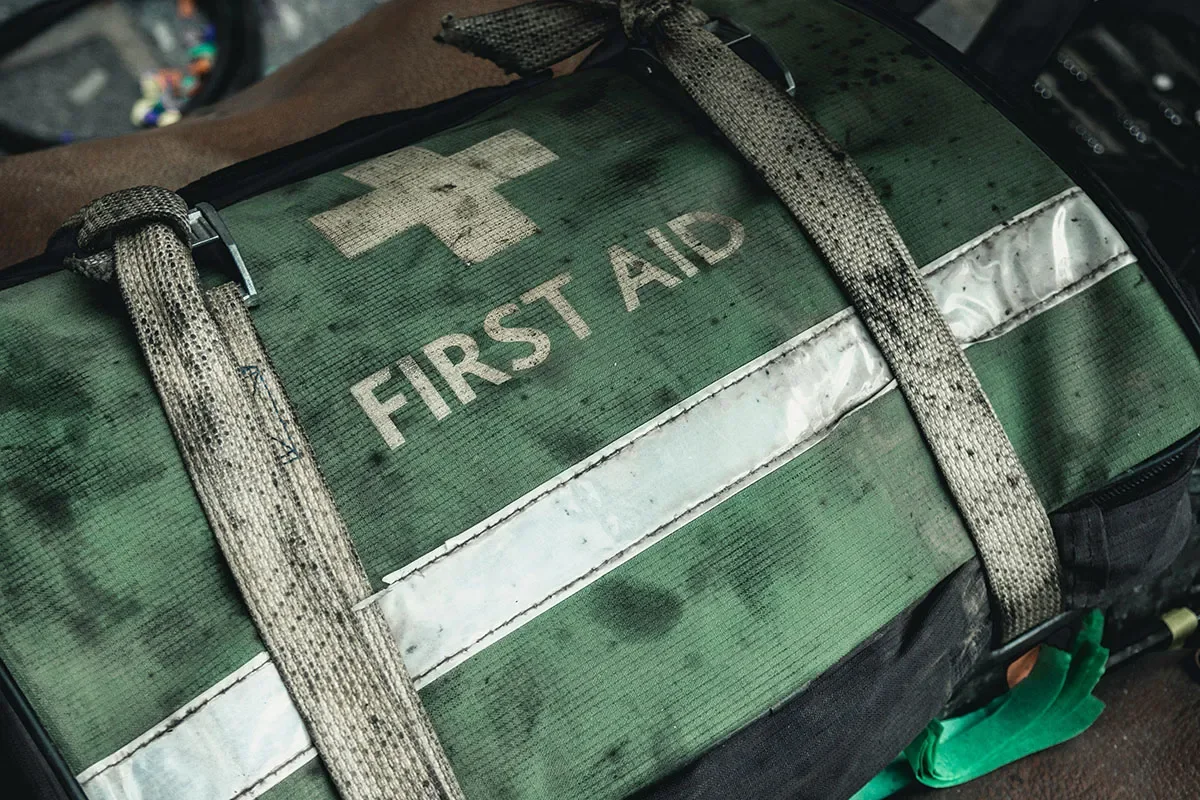
Image by Milan Degraeve
Carry a basic repair kit for your gear, which includes patches for tents, tarps, and sleeping bags, so you can fix any leaks while you’re camping. It is best to check your gear before you head off, so you can do any bigger repairs in advance.
You will also need an emergency kit that includes items like a first aid kit, fire-starting materials, a multi-tool, and an emergency blanket. Being prepared for unexpected situations is essential when camping in bad weather.
Leave No Trace
Be mindful of your impact on the environment, especially in wet conditions. Minimize trampling on fragile vegetation and avoid creating new trails. Remember to check weather conditions, inform someone of your itinerary, and practice “Leave No Trace” principles to minimize your impact on the environment.
Have Fun in the Rain
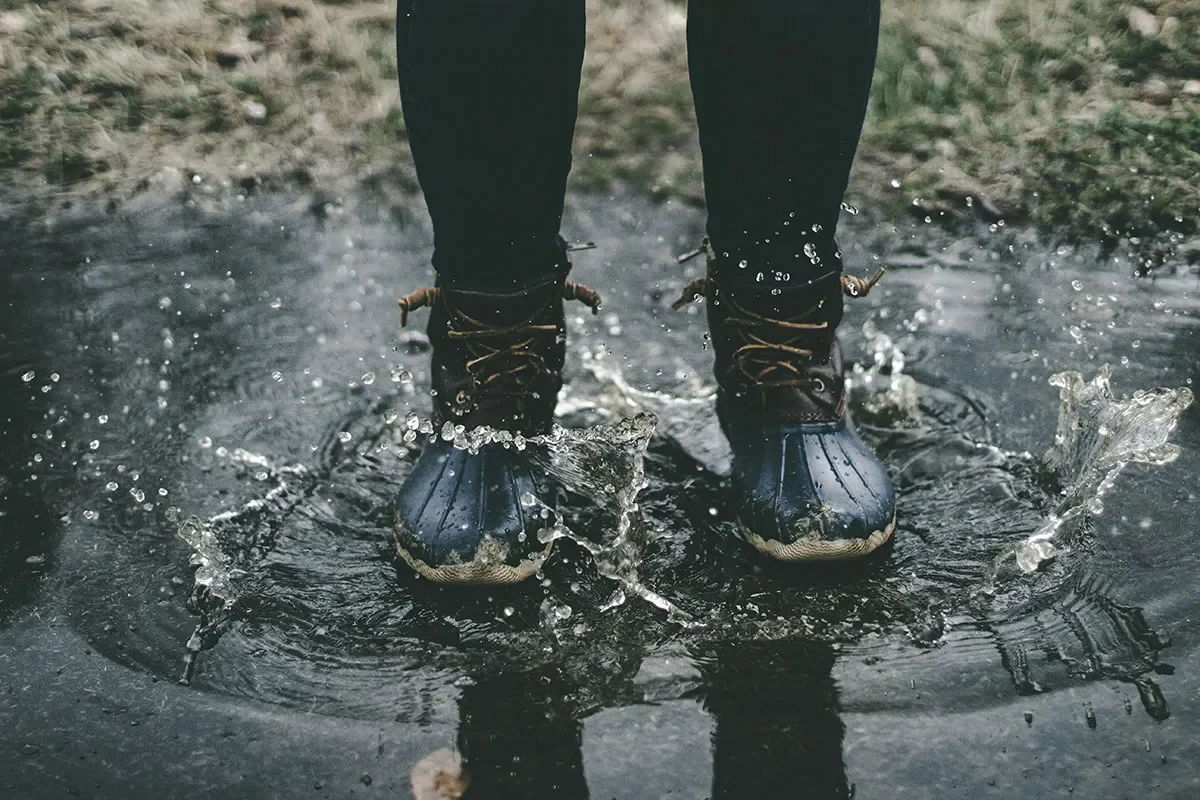
Image by Zach Reiner
Don’t let the rain spoil your camping adventure. Embrace the experience of a rainy camping trip and enjoy being out in nature, whatever the weather has in store.
The sounds of the rain pattering against the side of the tent can be very relaxing while you’re all tucked up and cozy inside. It can offer you the chance to catch up on some reading, enjoy some rainy day camping activities, card games, and conversation with friends.
The post 10 Tips for Camping in the Rain appeared first on Outdoors with Bear Grylls.
https://outdoors.com/tips-for-camping-in-the-rain/
 CampingSurvivalistHuntingFishingExploringHikingPrivacy PolicyTerms And Conditions
CampingSurvivalistHuntingFishingExploringHikingPrivacy PolicyTerms And Conditions
